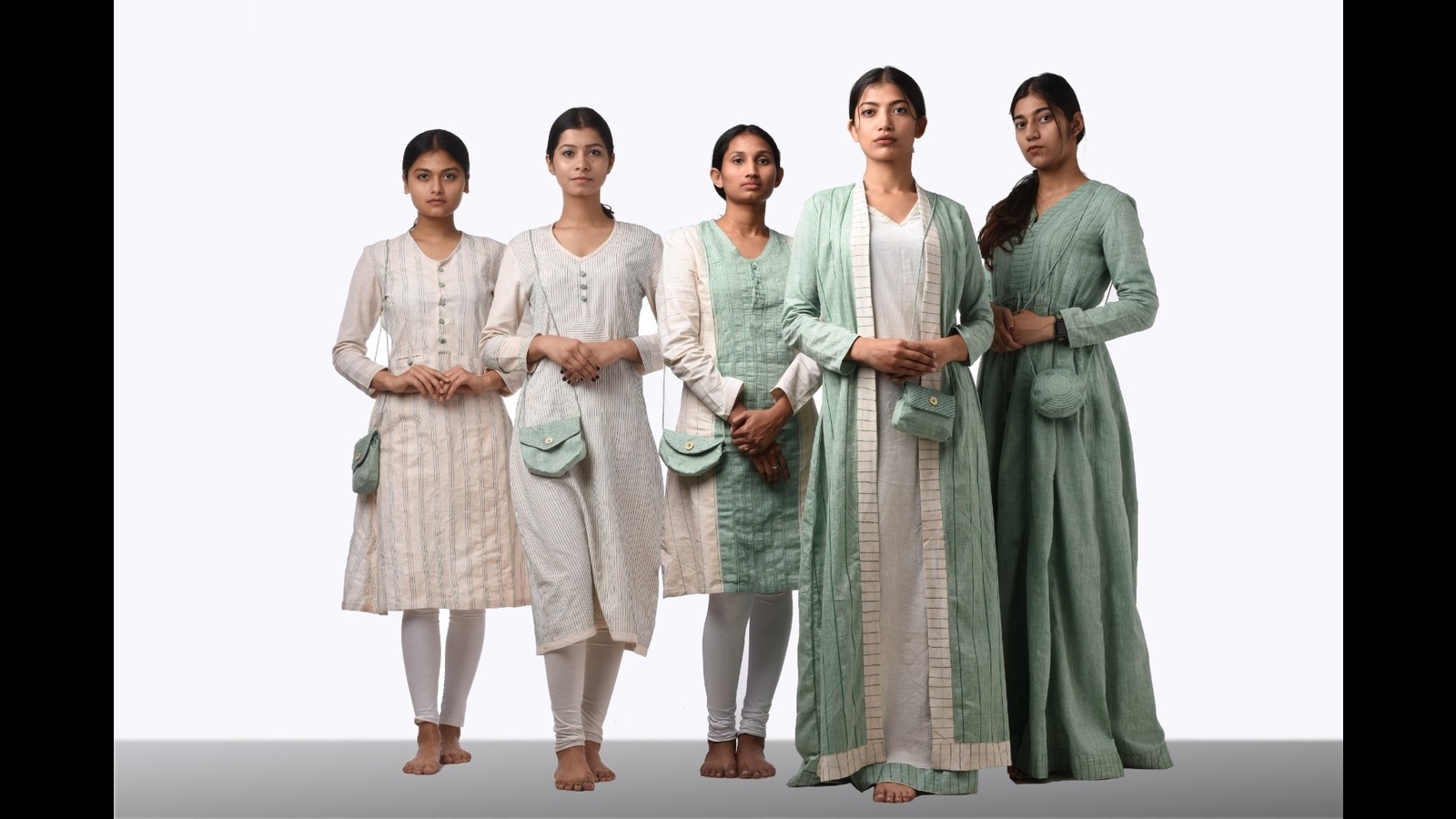Fashion
Indian designers take ethnic route to high fashion

International styling, fabric, design and fashion have dominated the Indian market, but gradually, and rightly so, indigenous fabric and craft are gaining ground. With Indian designers using traditional handloom fabric, art forms and handicrafts in their creations ethnic fabric and designs have reached the masses.
Leading from front
Fashion designer Manish Tripathi says, “For the upcoming World Skill Competition 2024, to be held in France from September 9, we have made the apparel for the Indian contingent in which we have used Indian craft and handloom as it represents our country’s heritage. Each sari for it has been hand-painted in Mithila art. Indian traditional crafts and textiles are so rich, and we are not using them to their full potential. I have been in the fashion design field for so long, but now when I am making Ram Lalla’s vastra daily, I am realising how rich our textile and craft is. It has been seven months and every day the deity wears a new dress in a different textile. I am still discovering new textiles and crafts every day.”
The designer who also made the dresses for the Asian Games contingent last year on the design and specification given by NIFT, New Delhi, says, “The market is growing every day. Earlier, we used to consider khadi and handloom as netaon ki poshak ya buzurgon ke liye hai but it has now taken a front seat and is leading the market in style quotient too. Today, khadi and handloom are far more accepted as fashion and amongst the elite and fashionistas. Designers are experimenting with it, and it has become a premier segment.”
He adds that uniqueness is the core strength of these handcrafted products. “Clothes made in the same loom, with the same thread and by the same person, but if you notice, every piece is different. That’s the uniqueness of handmade products! Every work made by an artisan is exclusive and we need to celebrate it, and the great thing is that buyers are accepting it as good things come for a price as mehnat involve hoti hai.”
Going global
Fashion designer Romaa Agarwal says that during a showcase on a global platform, she focused on sustainable fabrics made in India to promote the work of Indian artisans.
“All my dresses are made completely on handloom and the craft I used is handicraft. My entire collection was showcased at the London Fashion Week. It was on the theme of sustainability made with pure fabric and handcrafted designs and embellishments. Our collection was designed to include sustainable Indian fabrics like lotus stem, rose petal and bamboo fabrics,” she says.
The designer added, “In a world increasingly dominated by mass production, the timeless of Indian artisans is a beacon of creativity, culture, and heritage. As a designer dedicated to promoting these artisans, my mission is to bring their exquisite craftsmanship to the forefront, highlighting the intricate beauty and cultural significance of their work. Our focus is not just on showcasing their beautiful creations, but also on empowering the artisans themselves. By collaborating directly with these talented individuals, we ensure that they receive fair compensation for their work and have the resources they need to continue their craft. This approach helps preserve traditional techniques that might otherwise be lost to time.”
Preparing the base
Akhilendra Pratap Sonkar, assistant professor at the National Institute of Fashion Technology, Rae Bareli campus, says, “If we go to the pre-independence era, freedom fighters focused on khadi and Indian handlooms to take pride in self-reliance and our rich heritage and craft which in turn supports those who work towards it. In the current scenario, too, the focus is on Make in India and in the fashion world we have a tradition of handweaving and handicrafts,” he said.
Pratap says their students are groomed to get familiar with handicraft clusters and artisans to get the hang of Indian crafts. “Our institute was formed with a vision to promote our cultural heritage, handicrafts and handlooms. We recently celebrated Craft Week and then Handloom Week and did a fashion show. It’s mandatory for students to visit and stay at a handicraft cluster twice: to understand the craft and then a second time to incorporate them in their designs and spread the word about it,” he added.








